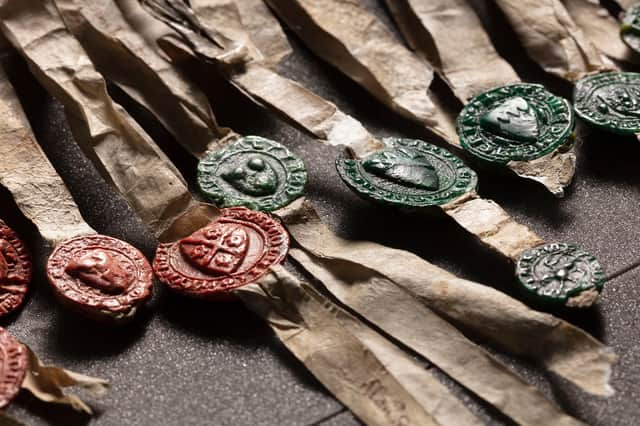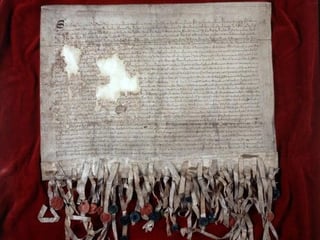Declaration of Arbroath: Raising the noble "ghosts" who sealed historic document


Now, the stories of those earls and nobles who sent their seals to be attached to the Declaration of Arbroath are coming to light in both a vast research project and a new book which aim to explore the people and social networks behind the landmark document.
The Declaration of Arbroath, which called for Scotland to be recognised as an independent nation with Robert the Bruce as King, was dated April 6 1320.
Advertisement
Hide AdAdvertisement
Hide AdConquered by No One, A People’s History of the Scots who made the Declaration of Arbroath, looks in detail at the back stories of the 39 nobles who supported the document as well as other key players of the day.
Robert the Bruce at the time of the declaration will be examined by his direct living descendant, Lord Charles Bruce, of Broomhall House, near Dunfermline.
Neil McLellan, of Aberdeen University, who is editing the book, said the sealants had barely been mentioned in some key accounts of the declaration.
He said: “In some histories, the sealants don’t even feature. These figures have become ghosts in history. Here we have taken the opportunity to shine light on them from a time when Scotland was of course a divided country at war with England but also when the barons and nobles of Scotland put aside their differences to found a document which doesn’t only have significance for Scotland but for democracy itself.”
Mr McLellan described the efforts to pull together the nobles in support of the declaration as “phenomenal”.
He added: “This is an exercise in diplomacy, leadership and co-ordination like no other. Some of these nobles had plotted against Bruce before hand and then some when on to plot against him not long after.”
They included William Soulis, the Butler of Scotland, who just weeks after the sealing of the declaration gave his name to the Soulis Conspiracy, the English-inspired coup to remove Robert I from the throne. Sealants Roger Mowbray and David Lord of Brechin were also implicated in the plot along with Ingram de Umfraville, who fought with the English and Bannockburn but then switched allegiance to the King of Scots.
Dr Matthew Hammond of King’s College London, a contributor to the book, said: “At a parliament held at Scone that August, Soulis got away with imprisonment, but David Brechin and the body of the recently deceased Roger Mowbray were drawn by horses and beheaded, in probably the first time this kind of grisly political execution took place in Scotland.”
Advertisement
Hide AdAdvertisement
Hide AdDr Hammond has been exploring the social networks behind the declaration in The Community of the Realm in Scotland, 1249-1424, a major piece of research into the document and its people.
The most prestigious group to seal the declaration were the eight earls, including Fife, March and Strathearn, who were traditionally considered to be the most powerful in Scotland, Dr Hammond wrote in an article for Historic Environment Scotland.
Newcomer Thomas Randolph, King Robert’s right-hand man who received the massive new earldom of Moray for his support, also features. There were, however, a number of high-profile earls missing, including King Robert’s nephews Earl Donald of Mar and Earl David Strathbogie of Atholl, who supported Edward II.
Dr Hammond said: “Their absence is the first hint that the Declaration was in fact papering over some serious fault lines in the Scottish political community.” Conquered by No One, A People’s History of the Scots who made the Declaration of Arbroath, will be published by Hammer & Mirror Books this summer.
